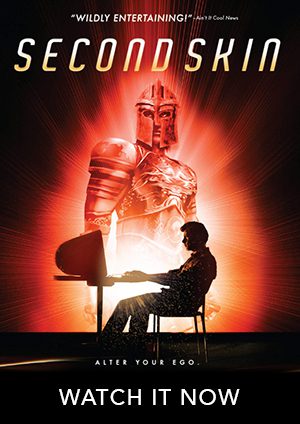Regardless of whether or not we want to admit it, we all have different faces we put on to deal with different events that occur in our lives. For example, you might choose to keep your mouth shut while you’re getting yelled at, rather than yelling back. How would you deal with a friend who has just been dumped? Or how about a fellow track team member who made a promise to their little cousin but is having difficulty keeping the promise, thanks to life? How you go about handling such things, what face you put on to do so, is your Persona. This is one of the core elements of Atlus’s PlayStation Portable (PSP) role-playing game (RPG), Shin Megami Tensei: Persona 3 Portable (P3P).
The original Persona 3 (P3) was released in Japan on 2006.07.13, and in North America on 2007.08.14 for PlayStation 2 (PS2). Persona 3 FES, also for PS2, was released in Japan on 2007.04.19, and in North America on 2008.04.22. Does P3P go with the flow, or should it have been left on the PS2?
A teenager who was orphaned as a young child returns to the city of their childhood. Shortly after transferring to their new high school, they’re attacked by Shadows— creatures that feed on the minds of their victims. The teenager soon discovers that they share a special ability with other students at school. From the fellow students, the teenager learns of the “Dark Hour,” a hidden time that exists between one day and the next, swarming with Shadows. The teenager joins the Special Extracurricular Execution Squad (SEES), and with their new friends, confronts the threat of the Shadows.
While P3P is a PSP version of FES, this isn’t a straight port. P3P’s graphics are a little downgraded from its console brethren, but that was to be expected as this is a hand-held version, and some things were added, while others were removed. Unfortunately, what was removed was things that help to make P3 and FES so great. These being animated cut-scenes, and (specifically in FES‘s case) The Answer.
(Note: To make it easier on everyone, when referring to P3, FES and P3P, I’ll call them “P3’s Company,” which yes, is a play on the title of the TV show Three’s Company.)
Events that were originally animated now play out with (mostly-)still portraits (the eyes blink but that’s it), and dialogue boxes, although they are still fully-voiced. The removal of the animated cut-scenes is a shame in my opinion, because events don’t have that impact without being animated.
The Answer is a second part of the story that was created specifically for FES, as a thank you to the Japanese fans who made P3 such a hit. It’s about as long as the the first part/P3, which is called The Journey, in FES. The Answer has a whole other dungeon, and gives closure to the story.
The cast of “P3’s Company” is so large that it has a multitude of characters, with each one being so varied from the others that it’s unlikely you’ll find 2 alike. Their personalities are very unique — from the head-strong Mitsuru and the aggressive Akihiko, to the goofball Junpei.
There are a number of things new to P3P, mostly minor but some are significant to the story. The main thing that was added is the option to play as P3P‘s exclusive female protagonist, rather than the PS2 versions’ male protagonist.
(Note: While both protagonists are nameless and named by the player, I’m going to call them by their most-canon, but unofficial names. In the manga, the male protagonist is named Minato, while the majority of the P3 community has dubbed P3P‘s female protagonist, Hamuko.)
The game is split into 2 sections, daytime and night. During the day, you go to school, hang out with your friends, do stuff normal teenagers do. At night, however, you explore a mysterious dungeon called Tartarus. Both sections play almost exactly like their PS2 counterparts, with the main difference being that now instead of moving Minato or Hamuko, you move a blue or pink cursor respectively, when not exploring Tartarus.
A typical day in the P3 (and P4 for that matter) universe is unlike in most other RPGs. Whereas in other RPGs, you just control the main character at certain times throughout the day, in “P3’s Company,” you control them, pretty much the whole day. You go to school, can attend clubs, make friends and lovers. Hell, you can even pee! You have an absurd amount of freedom for a RPG.
By hanging out with your friends, you build and strengthen Social Links (S. Links). These S. Links are the emotional ties you have with others, and they are also an integral way of obtaining more powerful Persona. Minato and Hamuko have their own S. Links, with different people. Each S. Link has a specific Arcana tied to it. These Arcana are of tarot’s Major Arcana, and are: The Fool, the Magician, the Priestess, the Empress, the Emperor, the Hierophant, the Lovers, the Chariot, Justice, the Hermit, Wheel of Fortune, Strength, the Hanged Man, Death, Temperance, the Devil, the Tower, the Star, the Moon, the Sun, Judgment, and the World. The Arcana plays a vital role in “P3’s Company.”
There are certain S. Links that you can’t build unless you have a high enough level in one of 3 stats: Academics, Charm and Courage. There are a number of ways to raise these stats. For example, to raise your Academics, you need to study and do well on exams (yes, you take exams); to raise your Courage, you can watch horror movies; and to raise your Charm, you can go to a cafe or whisper an answer when your friend is called on in class.
On the other hand, exploring Tartarus is pretty much your standard RPG fare. You move your party throughout the towering structure which changes day-by-day, as you explore it. Each of the floors is littered with Shadows wandering, with powerful Boss Shadows after so many floors. Shadows are visible while exploring, so you can try to avoid them, or you can try to sneak up on them and land a blow, which grants your party first strike in battle. However, Shadows can sneak up and do the same, so be careful. As with other RPGs, defeating enemies will give you Experience Points (EXP). As your EXP grows, you become stronger (or level up), as do your Persona.
P3P’s battle system is really an amalgamation of P3’s and P4’s battle systems. At first glance, it looks like every other turn-based RPG’s battle system. You have the usual command set of Attack, Magic, Item, and so on, but as I’ve previously mentioned in my SMT post, you can’t just attack blindly. That will land you in a world of hurt.
Almost every enemy has a weakness and a strength. Exploiting a weakness (let’s say you’re fighting an enemy that uses fire. Its weakness would be ice. So you’d use an ice-based attack) gives that character an extra attack. So keep exploiting weaknesses. However, if you use an attack an enemy is strong against (ie: you use a fire-based attack against that same enemy), you get one of 3 adverse effects: 1) the enemy will absorb the attack and regain health, 2) it will repel it back at you, or 3) it will nullify it altogether.
In “P3’s Company,” when you hit the weakness of an opponent that you’re fighting, you’ll knock it down. If you knock down every opponent, you’ll be granted a chance to perform an All-Out Attack, which is basically your party ganging up and beating the crap out of the opponent(s).
“P3’s Company” is a little controversial, in regards to how you use such skills. To do so, a party member puts a gun-shaped device, called an Evoker, to their head and pulls the trigger, momentarily releasing their Persona, which uses said skill. An Evoker is a symbol used to ‘kill off’ your old self, to free your true mind, your Persona.
By default, you only control Minato or Hamuko in battle, but in P3P, you can now control your party members yourself (direct commands) which was first an option in P4. Also taken from P4 is party members’ ability to take a blow for you (see: they’ll run and act like a shield).
“P3’s Company” features what Gabby and I call “semi-learning AI.” If a party member uses an attack and it doesn’t work, they announce that to the rest of the party and no one else uses that attack. The same goes for hitting a weakness. If a member uses an attack that hits a weakness, they remember it and continue to exploit it. However, P3P‘s AI was seemingly reverted back to P3’s — Instead of knocking multiple Shadows down, like in FES, that party member who hit the weakness, will hit the exploited enemy. That said, you can switch from AI-control to direct commands, and go for an All-Out Attack, yourself.
You obtain new Persona two ways: By winning them in Shuffle Time, a post-battle mini-game where you choose a face-down card, or by fusing 2 or more Persona you already have, in the Velvet Room, a room that only Minato and Hamuko can see and enter.
Persona are also categorized into Arcana. The strength of your S. Links comes into play during Persona fusion. For example, let’s say you’re fusing 2 into a Persona of the Lovers Arcana. If your Lovers S. Link is strong, that new Persona will receive a hefty amount of extra EXP, but if that S. Link has not been built when you fused that Persona, it will receive no extra EXP.
“P3’s Company’ has a lot of replay value. Once you beat it, you have the ability to start a New Game+ (NG+), which carries your level, stats, money and inventory over to a new game. You can also do a NG+ with the other protagonist, ie: Say you beat the game with Minato, you can do your NG+ with Hamuko instead, and vice-versa.
All of P3 and FES’s voice cast returns in P3P with 2 new additions: Laura Bailey to voice Hamuko, and an unconfirmed voice actor as Theodore, P3P’s exclusive male attendant in the Velvet Room (I can’t find any solid proof that confirms or dismisses it is who we think it is).
To be honest, the battle system as well as the voice cast are 2 of the things that have kept me so engrossed in the P3 games. Atlus knows what’s good.
There are number of small things added to P3P, including generally not-loved stuff like needing to pay to be healed and needing items to do what were originally dual-Persona attacks (The former doesn’t bother me, because that’s how it is in other SMT games). However, there are a few Easter Eggs, like a cameo from a mysterious man named Vincent, who is one of the main characters of the upcoming Xbox 360 and PS3 game, Catherine.
The music was composed by series veteran, Meguro Shoji, with Fujita Mayumi coming on for the soundtrack for Hamuko’s version, along with the returning Lotus Juice. Most, if not all of the original P3 soundtrack is present in Minato’s side. Along with its PS2 versions’, P3P’s soundtrack is pretty varied between rock, pop and hip-hop. Kawamura Yumi and Lotus Juice do a great job on their tracks, as does Fujita Mayumi. P3P‘s theme song, Soul Phrase (above) is performed by Kita Shuuhei, who performed Breakin’ through, the first opening theme of Persona: Trinity Soul.
“P3’s Company” is one instance where character designs were done by someone other than Kaneko Kazuma. In the case of the Persona 3 and Persona 4 games, they were done by Soejima Shigenori. While not quite as good as Kaneko’s, Soejima does a great job.
P3P is a game that once you get into it, it will not let you go. On just P3P, I’ve put in about 70 hours, and I’ve played it til my PSPgo’s battery died on a number of occasions. This is even with my 120+ hours on P3 and FES as well. Even if you’ve played P3 and/or FES and know the story, I still recommend you play P3P, if just for Hamuko’s version.
Rating: **** 1/2 (4.5 Stars)
Shin Megami Tensei: Persona 3 Portable was developed by Atlus, and published by Atlus USA. It was released on 2010.07.05 as both a physical retail version on UMD disc, as well as a digital download on the PlayStation Network. As of this writing, both retail for $39.99 USD new, and are rated M for mature.






This is one of the best RPG I’ve played. Beat it for 5 times, and I am still playing it. Almost hitting 100% persona collection. 🙂